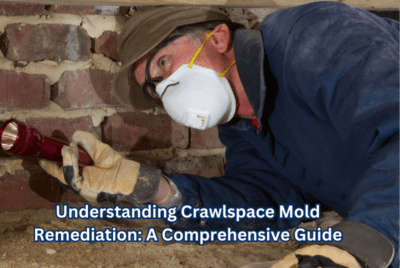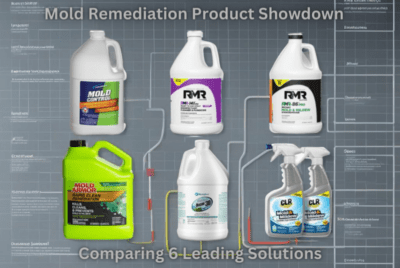Orange Mold in Shower: Everything You Need to Know
Hey there! If you’ve ever spotted an unsightly orange substance in your shower, you’re not alone. Orange mold is a common issue in bathrooms and can be quite a nuisance to deal with. But fret not! In this article, we’ll dive into everything you need to know about orange mold in showers, from understanding its characteristics to practical tips on prevention and remediation. So, let’s roll up our sleeves and get ready to bid farewell to that pesky mold!
Understanding Orange Mold:
Orange mold, also known as pink mold or aureobasidium, is a type of fungi commonly found in damp and humid environments like bathrooms. It thrives in areas with little ventilation, making your shower a perfect breeding ground. This mold typically appears in shades of orange, pink, or reddish-brown and can spread rapidly if left unchecked. Not only is it unsightly, but it can also pose health risks, especially for those with allergies or respiratory conditions.
Identifying Orange Mold in Showers:
Spotting orange mold can be tricky, as it often lurks in hidden corners and grout lines. Look out for small clusters of orange or pinkish spots on shower tiles, walls, and ceilings. If you notice a slimy texture and a musty smell, it’s likely mold. To be sure, take a closer look and compare images to confirm its identity.
Reasons for Orange Mold in Showers:
Understanding why orange mold loves your shower is essential for effective prevention. The primary culprits include high humidity levels, poor ventilation, and water leaks. Showers provide an ideal environment for mold to flourish, given the consistent moisture and warmth they offer.
Preventive Measures:
Prevention is key to avoiding orange mold in the first place. Start by reducing humidity levels in your bathroom through proper ventilation, such as using exhaust fans or opening windows. Regularly clean and dry the shower area, removing soap scum and water residues where mold can grow. Consider using mold-resistant paint and materials during renovations for added protection.
DIY Remediation Techniques:
If you spot orange mold in its early stages, you can tackle it yourself with some DIY techniques. Equip yourself with gloves, a mask, and eco-friendly cleaning agents. Mix a solution of vinegar and water, or hydrogen peroxide, and apply it to the affected areas. Use a scrub brush to gently remove the mold. Remember to work in a well-ventilated area and take breaks as needed.
Professional Mold Remediation:
For extensive mold infestations or if you have health concerns, don’t hesitate to seek professional help. Mold remediation experts have the experience and equipment to safely remove mold, ensuring a thorough and lasting solution. They can also identify the root cause of the mold issue and offer tailored prevention advice.
Maintaining Mold-Free Showers:
Once you’ve dealt with the orange mold, the key is to maintain a mold-free environment. Regularly clean your shower and keep an eye out for any signs of mold regrowth. Consider investing in a dehumidifier to keep humidity levels in check. Additionally, fix any leaks promptly and ensure your shower is adequately ventilated.
Importance of Indoor Air Quality:
Mold not only affects the appearance of your shower but also impacts the indoor air quality of your home. Poor air quality can lead to various health issues, from allergies to respiratory problems. Keeping your shower and home mold-free contributes to better overall air quality.
Health Concerns and Mold Allergies:
For individuals with mold allergies, exposure to orange mold can trigger uncomfortable symptoms like sneezing, coughing, and skin irritation. If you or your family members are prone to mold allergies, taking preventive measures becomes even more crucial.
Eco-Friendly Mold Prevention:
For those environmentally conscious, adopting eco-friendly mold prevention methods is a win-win. Natural cleaning agents and sustainable living practices not only combat mold effectively but also contribute to a greener planet.
1. Natural Cleaning Agents:
a. Vinegar: Vinegar is a versatile and powerful natural cleaning agent that can effectively combat mold. Its acidity helps to break down mold spores and prevents further growth. Mix equal parts of white vinegar and water in a spray bottle and apply it directly to affected areas. Let it sit for a few minutes before scrubbing the mold away with a brush or sponge. Vinegar also helps to eliminate musty odors, leaving your shower smelling fresh.
b. Tea Tree Oil: Tea tree oil is well-known for its antifungal and antibacterial properties, making it an excellent mold-fighting agent. Mix a few drops of tea tree oil with water in a spray bottle and apply it to mold-prone areas. Its pleasant scent will also provide a refreshing aroma in your bathroom.
c. Baking Soda: Baking soda is a gentle yet effective cleaner that can help remove mold and deodorize your shower. Create a paste by mixing baking soda with water, and apply it to the moldy areas. Let it sit for a while before scrubbing and rinsing thoroughly. Baking soda’s mild abrasive nature aids in lifting stubborn mold stains.
d. Hydrogen Peroxide: Hydrogen peroxide is another natural mold killer that can be used as an alternative to bleach. It breaks down mold and sanitizes surfaces effectively. Use a 3% hydrogen peroxide solution, and spray it directly onto the moldy areas. Allow it to sit for about 10 minutes before cleaning the mold away.
1. Sustainable Living Practices:
a. Proper Ventilation: Ensuring adequate ventilation in your bathroom is a key sustainable living practice that helps prevent mold growth. Use exhaust fans or open windows while showering and for a short time afterward to allow excess humidity to escape. Proper ventilation reduces moisture levels and creates an environment less conducive to mold growth.
b. Repair Leaks Promptly: Address any water leaks in your shower or bathroom promptly. Even minor leaks can lead to significant moisture buildup, promoting mold growth. Fixing leaks not only prevents mold but also conserves water, making it a sustainable practice.
c. Use Mold-Resistant Materials: During renovations or when choosing materials for your shower, opt for mold-resistant options. Mold-resistant drywall, paint, and grout can help deter mold growth, making your bathroom more resilient to mold-related issues.
d. Regular Cleaning and Maintenance: Maintaining a clean and dry shower is crucial in mold prevention. Regularly clean and disinfect your shower area, paying attention to corners, tiles, and grout lines where mold can hide. Promptly remove soap scum and water residues to prevent mold from taking hold.
By incorporating these eco-friendly cleaning agents and sustainable living practices into your mold prevention routine, you not only create a healthier living environment for yourself and your family but also play a part in preserving the planet for future generations.
The Connection Between Mold and Structural Damage:
Aside from health concerns, mold can wreak havoc on your property’s structural integrity. It can weaken surfaces, cause wood rot, and even lead to decreased property value. By tackling mold promptly, you safeguard your investment and prevent costly repairs.
Common Mistakes in Mold Prevention:
Avoiding some common mistakes can make a world of difference in mold prevention. For instance, using bleach to clean mold may appear effective, but it doesn’t address the root cause and may even promote mold growth in the long run. Understanding these pitfalls can save you time, money, and frustration.
Raising Awareness: Sharing Experiences:
Mold issues are more common than you might think, and sharing experiences can help others facing similar challenges. Join online communities or forums to exchange ideas, tips, and success stories in mold prevention and remediation. Together, we can create mold-free environments and healthier living spaces.
Conclusion:
Orange mold in showers may seem like an unwelcome guest, but with the right knowledge and proactive measures, you can bid it farewell for good. Remember to keep your shower well-ventilated, dry, and regularly cleaned. Should mold strike, don’t hesitate to take action promptly or seek professional assistance. By adopting eco-friendly practices and maintaining a mold-free environment, you’ll not only protect your property but also ensure a healthier and happier home for you and your loved ones.
FAQs:
1. Can orange mold cause serious health issues?
- Orange mold can trigger health problems, particularly for individuals with mold allergies or respiratory conditions. It’s crucial to address mold promptly to avoid potential health risks.
2. How often should I clean my shower to prevent mold growth?
- Regular cleaning is essential. Aim for weekly cleanings, paying extra attention to areas prone to moisture accumulation.
3. Are there eco-friendly mold prevention products available?
- Yes, many eco-friendly cleaning agents and mold prevention products are available in the market. Look for products labeled as non-toxic and biodegradable.
4. Should I be concerned about mold in my rental property?
- Yes, mold issues in rental properties should be addressed promptly. Notify your landlord immediately if you notice mold growth.
5. Can I use bleach to remove orange mold?
- While bleach may temporarily remove mold, it’s not the most effective solution. It doesn’t address the root cause and may promote mold regrowth. Opt for eco-friendly alternatives for better results.




